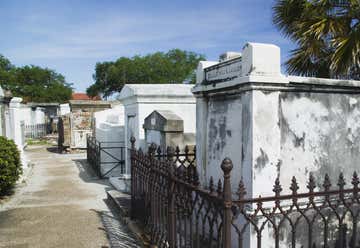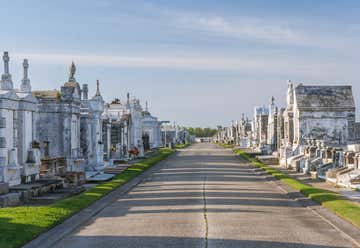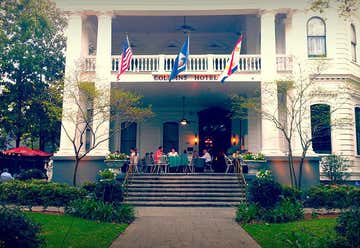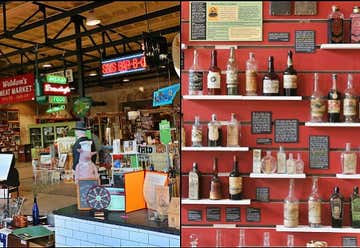Pretty much every day is Mardi Gras in the lively port city of New Orleans. Also called "The Big Easy," this city's rich history, with distinctive hints of French and Spanish heritage, make it a culturally colorful destination. Spicy Creole cuisine, a wild party scene on the notorious Bourbon Street, and the city's voodoo past provide visitors a varied and totally unforgettable experience.
Before starting to explore New Orleans, head to Cafe Du Monde and grab a plate of sugar-coated beignets and a cafe au lait made with chicory coffee. Chicory coffee is a French coffee alternative that was often roasted, ground and mixed with beans to make coffee supplies last longer. Even though making coffee beans last isn't as much of an issue anymore, it's remained a New Orleans tradition.
New Orleans and voodoo go together like etouffee and rice, and since you're in the Big Easy, you should delve as far into this mysterious and fascinating subculture as you feel comfortable. But, before you go messing around with spells, head to the Voodoo Museum to learn more about this historic religion. The museum is only two rooms, but they're crammed with artifacts and examples...plus, it's run by voodoo practitioners, so don't be shy to ask any questions you might have.
The most famous voodoo queen of all is Marie Laveau. Born a free African-American in New Orleans' French Quarter, she amassed a huge following and became incredibly powerful and well-respected within the city, and not just because of her magic. Marie Laveau's House of Voodoo is named for her, and here, you can find all kinds of voodoo accoutrements, from gris-gris bags to candles, to fulfill any wish or desire you might have. You can also get a psychic reading here!
Finish your voodoo tour with a stop at St. Louis Cemetery, where Marie Laveau herself is buried. Leave an "X" on her tomb for good luck, and then wander the rows. In New Orleans, most burials took place in above-ground graves like these in case of flooding, and also to save room by building upwards. So even though the cemetery is only one square block, thousands of people are believed to have been laid to rest here. TIP: Keep your eyes peeled for the weird, pyramid-shaped tomb that actor Nicolas Cage bought for himself!
Grab a hot dog for lunch at Dat Dog, where you can get Alligator-, crawfish-, and duck-filled dogs, as well as some amazing toppings. Seriously, you can get crawfish etouffee on top of your sausage, or on your french fries, if you're feeling adventurous.
Lafayette Cemetery No. 1 is another one of New Orleans' historic, above-ground cemeteries. It's rich with eerie, crumbling beauty, and is well worth exploring on your own, or with a tour that can provide loads of background information and context.
Freaked out by the cemetery? Settle your nerves with a happy hour drink at the elegant Victorian Lounge at the Columns Hotel. This place smells of rich mahogany because it's covered in it, so kick back with a sazerac and soak up the charm.
Willie Mae's Scotch House is a total change of pace from The Columns, but it's equally important in order to get the full New Orleans experience. There will probably be a line, but don't let that deter you, because the chicken here is absolutely worth it. And don't forget to grab some sides. Mac and cheese, fried okra, and more round out a belt-bustingly perfect meal.
Good thing you filled up on chicken, because you'll need it to soak up the booze you're about to drink on Bourbon Street. Grab hand grenades at Tropical Isle, daiquiris at Fat Tuesday, hurricanes at Pat O'Brien's. Then catch some live music at Fritzel's European Jazz Club, sing some karaoke at the Cat's Meow, and for goodness sake, try not to black out too hard.
Luckily, the Dauphine Orleans Hotel is a historic boutique joint only a block off Bourbon Street, so stumbling home won't be too much of a challenge. It's got a New Orleans-style courtyard with a saltwater pool, a bar that used to be a bordello, and is where James Audubon painted his famous bird pictures, so it's a nice little cross section of NOLA history. Plus, the rooms are quite comfortable, and have balconies for great people-watching.
There's nothing like a nice jazz brunch to help recover from conquering Bourbon Street the night before. Grits, eggs Benedict, turtle soup, bananas foster, bread pudding, king cake, and more are available in the Court of Two Sisters' lovely courtyard. During your meal prepare to be serenaded by lively jazz music, it's the perfect way to set the tone for the day.
The site where the historic French Market stands has been a trading hub since Native American times. Because it predates European colonization of the city, that makes it the oldest market in the country. It's mostly touristy now, but it's still a good place to browse for souvenirs, listen to street performers, and sample some Cajun street food.
Booze clearly has an important place in New Orleans culture, so it's worth it to stop by the Museum of the American Cocktail to learn more about it, and how it's played a part in the city's past, present and future. It's located in the Southern Food and Drink Museum, so you can explore both and learn about New Orleans history through this fascinating lens.
Or, if you're so hungover that the thought of booze makes your stomach turn, then maybe you'd prefer to check out the New Orleans Pharmacy Museum instead. The 19th century was an interesting, and sometimes scary and gross, time for medicine, and the museum does a great job of covering it all. Plus, pro tip, there's a beautiful little courtyard out back!
Cochon Butcher is a butcher shop/sandwich counter/wine bar...and the perfect lunch stop. If you're not too hungry, go for the charcuterie...but they make one of the best muffalettas in the city. A muffaletta is a sandwich stuffed with Italian meats, cheese, and olive salad made from giardiniera.
Then it's on to Preservation Hall. Part music venue, part touring band, part record label, and part non-profit organization, Preservation Hall was founded in the 1960's to help protect the unique sound of New Orleans style jazz. You might have to wait in line, and the seating is tight, but you won't find a better show in the city.
Even though Jean Lafitte's Blacksmith Shop is on Bourbon Street, it's worth a visit when you're sober. It's one of the oldest buildings in New Orleans, built in 1720, and it may have been the headquarters for famous New Orleans pirate Jean Lafitte. Bask in the history, enjoy a strong drink, listen to the piano, and keep your eyes peeled for ghosts.
Eat at Dickie Brennans to find out how New Orleans does steak. Shrimp boils, gumbo, and bananas foster bread pudding are also menu favorites at this classic French Quarter eatery.
Cap off your last night in NOLA with a drink at the famed Carousel Piano Bar & Lounge. Hemingway, Faulkner, Capote, Tennessee Williams, and even the guy who wrote "Forrest Gump" have frequented this establishment, and it's not hard to see why people like this place so much. The opulent circus-themed bar (which rotates like a carousel, hence the name) is beautiful, and Liberace often played in the Swan Room, just off the bar. Plus, it's located in the stunning Hotel Monteleone.
Best time of year for a 48-hour getaway to New Orleans: Summers can be sweltering in NOLA, and fall brings the risk of hurricanes. Things cool off in the winter, but spring brings in a huge influx of tourists around Mardi Gras (the Tuesday before Ash Wednesday), for the massive, nearly-weeklong celebration that's synonymous with New Orleans, so watch out for prices to spike around then.
Natalie Akers
Western Mass transplant. I like small towns with big ideas, preferably under snowfall.



















